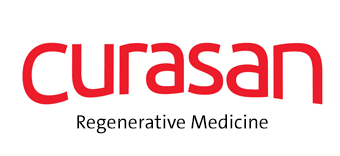5 Reasons Why You Should Make the Switch to Synthetic Graft Material
 Safety. While human and bovine graft materials are tested and processed for sterility, there is still no guarantee there will not be an immunological reaction or transfer of disease. With synthetic material (such as Cerasorb® M) this risk is completely eliminated. Cerasorb® is 99.9% pure, and is the worldwide testing standard for ß-TCP. This means less worry for you and your patients.
Safety. While human and bovine graft materials are tested and processed for sterility, there is still no guarantee there will not be an immunological reaction or transfer of disease. With synthetic material (such as Cerasorb® M) this risk is completely eliminated. Cerasorb® is 99.9% pure, and is the worldwide testing standard for ß-TCP. This means less worry for you and your patients.- Predictability. With allograft and xenograft there are many factors that affect the quality of the bone, such as age, genetic disposition, and lifestyle related health risks of the patient. These factors determine the resorption and healing time. With a synthetic like Cerasorb® M you can rest assured knowing you have a reliable, predictable, product you can trust time and time again to deliver the same excellent results.
- No Second Surgical Site. Using a synthetic graft material means you don’t have to harvest bone from another surgical site. The material is ready for you to use, without an additional invasive and potentially harmful procedure. Your patients will be happy, and you can spend the extra time focusing on additional patients.
- Ecological. The solvents required to process human or animal tissue create a significant amount of hazardous waste and threaten our ecosystem. Production of Cerasorb®, in contrast, does not involve any hazardous materials or solvents. Furthermore, many of your patients may be vegetarian, vegan, or have religious reasons to prefer a clean synthetic material over animal or human tissue in their mouth.
- Performance. With over 150 publications, and over 1.3 million vials delivered, Cerasorb® is the most documented synthetic bone graft material and the only one proven equivalent to autologous bone in dental surgery (sinus lift, human clinical trial*). Your patients will love the results, and will help build your practice through satisfied referrals.
Recent market reports suggest that due to challenges associated with conventional autografts and allografts such as high risk of disease transmission, the need for multiple surgeries, and limited sources for both types of grafts, there is increased demand for bone graft substitutes like synthetics (January 2014; Global Industry Analysts, Inc.). Though they may be less commonly used in the dental arena currently, synthetics offer the same, if not better, results as their allograft/autograft counterparts without the associated risk. They offer a safe, natural way to regenerate bone.
Why not give them a try? Already have? Leave your experience with synthetic materials in the comments below!
